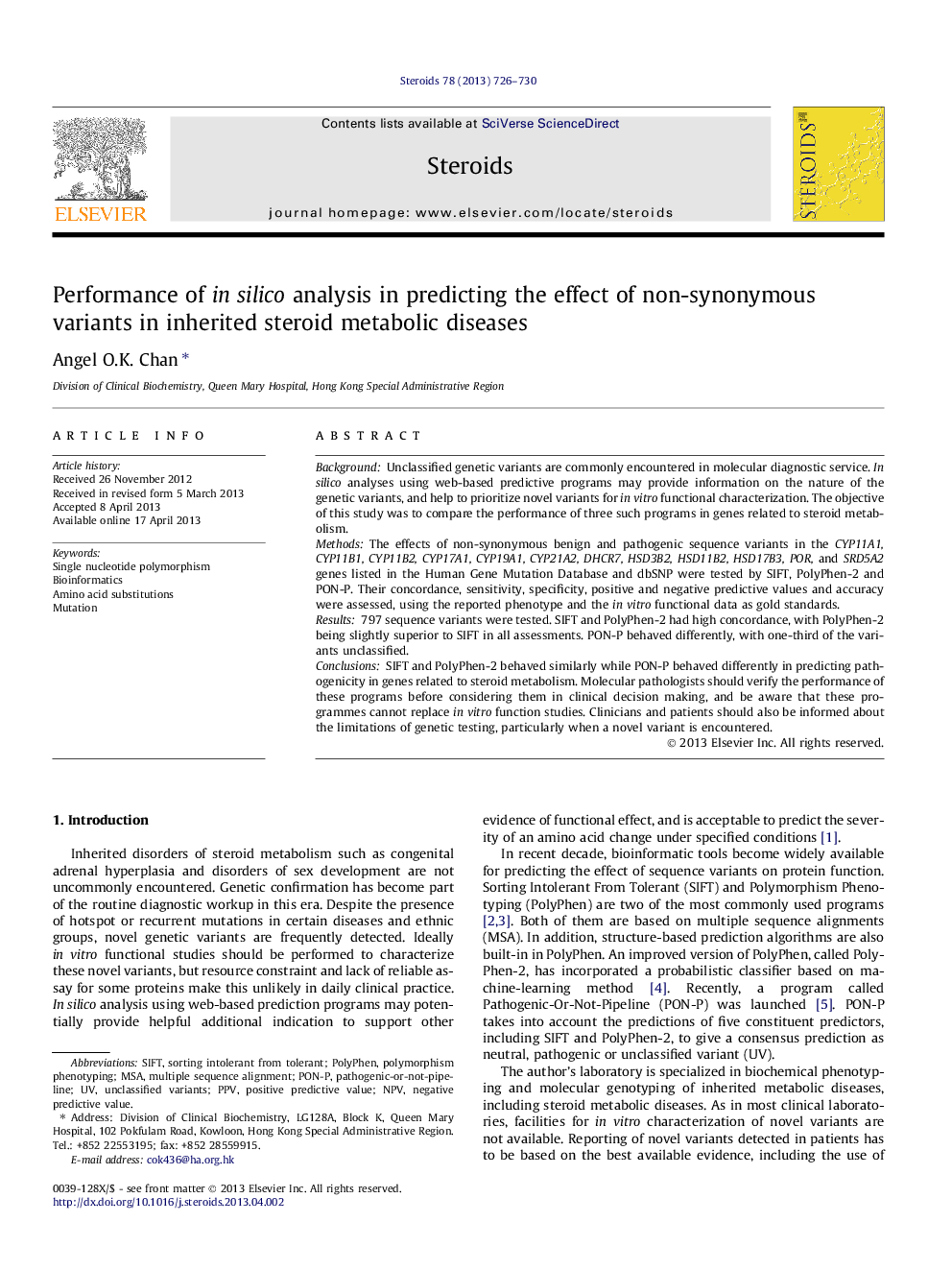| Article ID | Journal | Published Year | Pages | File Type |
|---|---|---|---|---|
| 2028023 | Steroids | 2013 | 5 Pages |
•SIFT and PolyPhen-2 had high concordance in testing genes of steroidogenic diseases.•PON-P behaved differently from the other two programs.•The performance of these programs should be verified before use in clinical service.
BackgroundUnclassified genetic variants are commonly encountered in molecular diagnostic service. In silico analyses using web-based predictive programs may provide information on the nature of the genetic variants, and help to prioritize novel variants for in vitro functional characterization. The objective of this study was to compare the performance of three such programs in genes related to steroid metabolism.MethodsThe effects of non-synonymous benign and pathogenic sequence variants in the CYP11A1, CYP11B1, CYP11B2, CYP17A1, CYP19A1, CYP21A2, DHCR7, HSD3B2, HSD11B2, HSD17B3, POR, and SRD5A2 genes listed in the Human Gene Mutation Database and dbSNP were tested by SIFT, PolyPhen-2 and PON-P. Their concordance, sensitivity, specificity, positive and negative predictive values and accuracy were assessed, using the reported phenotype and the in vitro functional data as gold standards.Results797 sequence variants were tested. SIFT and PolyPhen-2 had high concordance, with PolyPhen-2 being slightly superior to SIFT in all assessments. PON-P behaved differently, with one-third of the variants unclassified.ConclusionsSIFT and PolyPhen-2 behaved similarly while PON-P behaved differently in predicting pathogenicity in genes related to steroid metabolism. Molecular pathologists should verify the performance of these programs before considering them in clinical decision making, and be aware that these programmes cannot replace in vitro function studies. Clinicians and patients should also be informed about the limitations of genetic testing, particularly when a novel variant is encountered.
